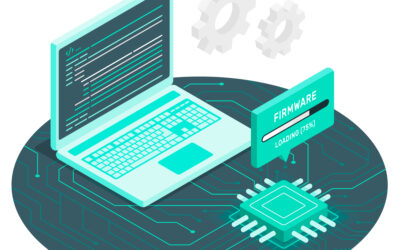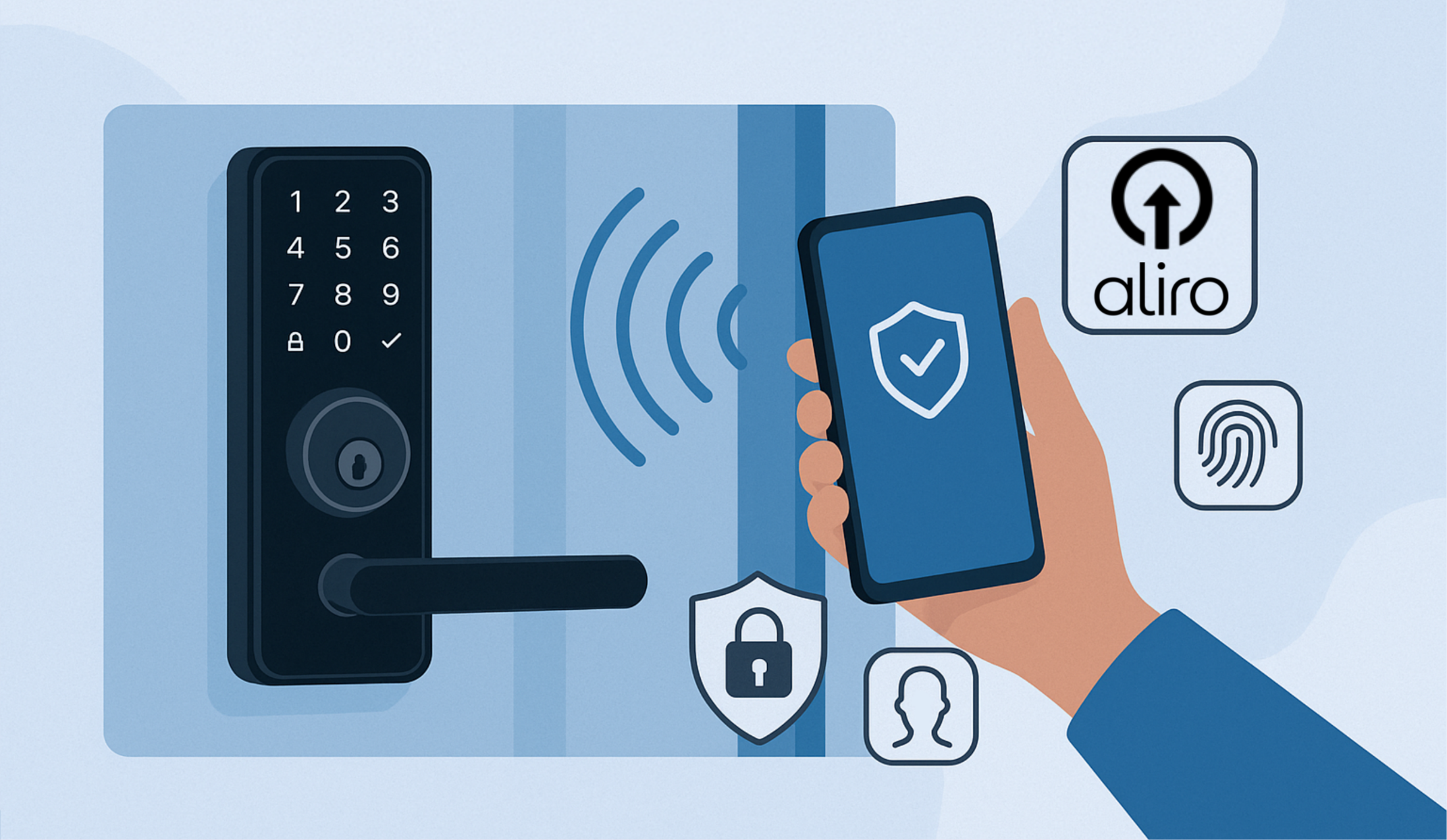Aliro is a groundbreaking initiative by the Connectivity Standards Alliance aimed at transforming digital access control. It’s designed to standardize and enhance how mobile devices and wearables interact with access control systems, focusing on creating a secure, convenient, and consistent user experience.
The initiative is driven by the need for a consistent user experience (UX) in digital access using consumer electronics. The existence of proprietary solutions in this space has led to inconsistencies that delay the widespread adoption of new technologies.
By establishing a common credential and communication protocol, Aliro ensures interoperability between various devices and access control readers, thereby enabling users to unlock doors and other entry points seamlessly.
The Alliance comprises hundreds of companies, many of which are leaders in lock products and related security solutions, focusing on this project to promote the Aliro protocol and uphold the principles of open standards and interoperability among devices.
The effort is supported by major tech companies like Apple, Google, Samsung, and others. These companies are contributing resources and expertise to develop the Aliro standard.
Core Principles and Benefits
- Simplicity: Aliro reduces integration complexity and streamlines troubleshooting, lowering barriers to implementation.
- Flexibility: It supports diverse installations and architectures, providing convenient access to common and individual entry points.
- Security: The protocol is a foundation for state-of-the-art, secure, and trusted mobile access solutions.
- Interoperability: Its standardized communication protocol enables manufacturer-independent devices and readers to work collaboratively.
Aliro is not just a technical standard; it represents a significant industry collaboration, similar to Matter protocol, aimed at eliminating barriers to innovation and improving the end-user experience, regardless of hardware or operating system.
It introduces a common credential and access technology, defined by leading mobile and access control OEMs, to ensure top-notch security, privacy, and interoperability among certified devices.
Aliro specifies a secure method for using your mobile device or wearable as a key to open locks. Aliro is a complementary standard for Matter Smart Home. Matter devices can support both Aliro and Matter protocols together or individually, depending on the smart home use case.
Market Applications
Aliro is working to define the standards for multiple verticals, including the following:
- Commercial: Aliro streamlines interoperability across various hardware from different vendors.
- Residential: It offers homeowners a seamless experience using their mobile phones or wearables (smartwatches) as keys.
- Installers and System Owners: The protocol empowers installers to simplify complex systems and assists system owners in managing a mix of hardware and software with ease.
- Manufacturers: Aliro helps reduce R&D costs and complexity in partner integrations.
Aliro Technical Aspects
The Aliro communication protocol supports various transmission technologies, incorporating NFC, Bluetooth LE, UWB, asymmetric cryptography, and credential data. This versatility is key to its widespread applicability and effectiveness.
Aliro is under development and has yet to be available to its members. It is also expected to undergo certification by the Alliance to identify products supporting the protocol.
The Connectivity Standards Alliance envisions Aliro as a key player in making digital access more integrated, secure, and user-friendly. The protocol is expected to revolutionize access management in various settings, including homes, offices, hotels, healthcare, and educational institutions.
In essence, Aliro represents a concerted effort to redefine digital access, standardizing and enhancing how mobile devices and wearables interact with access control systems, aiming to make digital access more seamless, secure, and universally compatible.













I thoroughly enjoyed this blog post on the potential of Aliro Protocol. As an engineer with some experience in IoT, I appreciate how it streamlines interoperability across various devices from different vendors. It’s no wonder why IoT consulting services are now incorporating this technology into their solutions.
I’m intrigued by the prospect of Aliro protocol’s integration with IoT devices, particularly its incorporation of asymmetric cryptography for enhanced security. However, I’d love to see a more nuanced discussion on the trade-offs between convenience and security. For instance, how will users balance the benefits of seamless access management against potential vulnerabilities introduced by the adoption of multiple transmission technologies (e.g., NFC, Bluetooth LE)? Can someone shed more light on this? 🤔💻
Thanks for pointing this out! It’s true that users need to balance convenience and security. IoT consulting companies often face this trade-off, but Aliro aims to minimize it by providing a secure and seamless experience.
I totally get where you’re coming from! It’s all about finding that balance between convenience and security. With Aliro, users can enjoy seamless access management while minimizing potential vulnerabilities introduced by multiple transmission technologies. But let’s be real, who wants to trade off security for convenience? Digital access control should be both secure AND convenient, right?
While the integration of Aliro protocol with IoT devices is certainly intriguing, I’d like to see more discussion on the trade-offs between convenience and security. For instance, how will users balance seamless access management against potential vulnerabilities introduced by multiple transmission technologies? This question is particularly relevant in the context of internet of things consulting, where securing interconnected devices is a top priority.
It would be beneficial for developers to weigh the benefits of streamlined access against potential risks, such as data breaches or unauthorized access. By doing so, they can create more secure and reliable IoT systems that prioritize user safety above convenience.
To balance convenience and security, one should consider the principles of Aliro, such as simplicity and flexibility. However, this may require IoT consulting services to ensure smooth implementation.
I completely agree that a standardized protocol for mobile and wearable access control is long overdue! As an IT project manager with limited IoT experience, I see great potential in Aliro’s open standards approach. Perhaps it’s time for IoT consulting services to explore implementing this protocol across various industries?
Tbh, i think aliro protocol is actually a game-changer in the IoT space. it’s amazing how they’re making it easy for devs to integrate access control into their projects without having to deal with a ton of complexity. as someone who works with IoT consulting companies all the time, i can appreciate the importance of standardized protocols like Aliro. interoperability is key here – it’s gonna open up so many possibilities for smart homes and buildings. thanks for sharing this!
Idk if i’m the only one who thinks this is kinda obvious, but for real tho – incorporating NFC, Bluetooth LE, UWB, asymmetric crypto, and credential data is just basic IoT stuff. I mean, it’s cool that Aliro’s got all these features, but like, didn’t we know that IoT consulting companies were gonna make this a thing? Still, excited to see how it’ll play out in real-world scenarios. Hopefully, it’s not just another security headache waiting to happen
Idk if i’m sold on the idea of another proprietary protocol, but I suppose it’s cool that the Aliro Protocol supports NFC, BLE, and UWB. Still gotta see some actual implementation before I get excited.